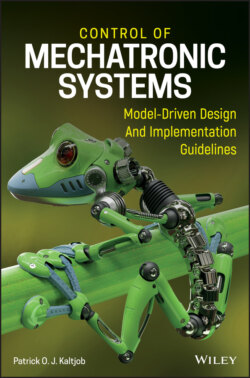Читать книгу Control of Mechatronic Systems - Patrick O. J. Kaltjob - Страница 17
Example 1.2
ОглавлениеFigure 1.2, depicting a salt-generating solar-based thermal power plant substation, illustrates an example of non-continuous processes (discrete event- or object-related). In this power plant, solar radiation is collected by thousands of sun-tracking mirrors (heliostats), which reflect it toward a single receiver atop a centrally located tower. Solar radiation is the electromagnetic radiation emitted by the sun. As such, it is necessary to:
1 Control the collector angle and position (sun tracker) to face the sun to collect the maximum solar radiation as well as to maintain peak power despite varying climate conditions. This is done by adjusting the operating setting based on measured voltage and current outputs of the array.
2 Logically control the energy storage by switching between charging/discharging operating modes based on climatic conditions (sun availability), battery charge status, load levels, and level of energy collected through solar irradiation by mirror arrays.
3 Control the temperature of the collector used to melt a salt. The hot molten salt is stored in a storage tank to generate steam and later used to drive the turbine and attached generator.
4 Control the flow of heated fluid circulating between the tank and the collector. This fluid with molten salt at a low temperature is pumped to the cold collector tower for the next thermal cycle. The operating temperature over this thermal cycle derives the quantity of energy to be extracted.
Figure 1.2 Steam-based power generation technical process schematic.
Digital control systems aim to coordinate the operations of several electrically-driven machines in order to meet specific operational objectives such as water purification, voltage control in an electrical power grid, or temperature regulation in a fermentation tank. Thus, it is usually necessary to ensure the integration of a large number of control system instruments (from data processing and computing units to measuring units). Figure 1.3 illustrates the generic components in the design of computer control systems with supervisory functions. An example of the relationship between a technical process and electromechanical system control is illustrated in Figure 1.4.
Figure 1.3 Generic controlled mechatronic systems and instrumentation block diagram.
Source: Adapted from Kaltjob P.
Figure 1.4 Relationship between technical process and machine control systems.
Source: Based on Kaltjob P.
